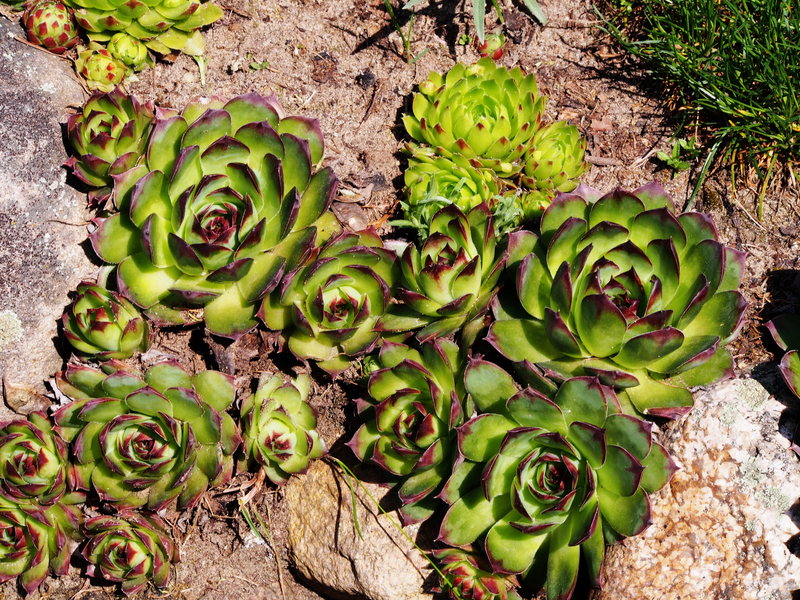Embarking on a Journey to Revitalize Your Neglected Garden
Posted on 06/06/2025
Embarking on a Journey to Revitalize Your Neglected Garden
Is your once-beautiful garden overrun with weeds, lifeless soil, and forgotten dreams? Embarking on a journey to revitalize your neglected garden is a rewarding endeavor that transforms not only your outdoor space but your entire living environment. Whether you have inherited a deserted plot, let your flowerbeds slip through the seasons, or simply want to restore your backyard to its former glory, this in-depth guide will provide you with everything you need to achieve a thriving, vibrant oasis.
Why Reviving a Neglected Garden Matters
Many homeowners underestimate the importance of a healthy garden. A revitalized landscape doesn't just improve curb appeal--it nurtures wildlife, supports mental wellness, and creates a sanctuary right outside your door. By taking steps towards restoring your forgotten garden, you will enhance property value, make eco-friendly strides, and generate a source of personal pride.

Assessing Your Overgrown Garden: The First Step
Before diving headfirst into planting or pruning, it's crucial to assess the current state of your plot. Understanding the unique challenges and hidden potential helps in crafting a strategic approach for your garden rejuvenation journey.
Key Elements to Examine
- Soil Health: Check the soil texture, pH levels, and presence of compaction or erosion.
- Plant Inventory: Identify existing plants--both wanted and unwanted.
- Weeds and Pests: Note the types and extent of infestation.
- Hardscape Condition: Evaluate fences, patios, sheds, and paths for repair needs.
- Light and Shade: Observe sunlight patterns and shade distribution throughout the day.
*Tip: Take photographs and sketch a basic map of your garden. This will help you track progress and visualize design changes over time.*
Clearing Out the Neglect: The Big Clean-Up
Now comes the phase that requires elbow grease--restoring a neglected garden starts with clearing away the overgrowth. By methodically eliminating debris and weeds, you lay a fertile foundation for revitalization.
Step-by-Step Clean-Up Routine
- Remove Large Debris: Pick up branches, litter, and rotted wood.
- Pull Weeds Thoroughly: Use hoes or a fork to extract roots and prevent regrowth.
- Cut Back Overgrown Shrubs: Prune dead or wayward branches for airflow and sunlight penetration.
- Dispose Responsibly: Compost green waste whenever possible to enrich future soil.
- Revive Lawn Areas: Mow high grass and remove thick thatch with a rake.
Take your time. If your space is large or wildly overgrown, tackle one area at a time--restoration is a journey, not a race!
Improving the Soil: The Secret to a Flourishing Garden
Soil is the heart of any successful garden restoration. Years of neglect often lead to poor soil health, compaction, or nutrient depletion. To bring your neglected garden back to life, invest in rejuvenating the earth.
How to Reinvigorate Your Soil
- Test the Soil: Use a home kit or professional service to check for acidity, fertility, and nutrient balance.
- Amend Regularly: Add organic matter such as compost, well-rotted manure, or leaf mold to restore life and improve drainage.
- Aeration: Loosen compacted ground with a fork or aerator to allow air and water penetration.
- Mulching: Apply an organic mulch layer to suppress weeds, retain moisture, and regulate soil temperature.
*Healthy soil is an investment that pays off for years, making other aspects of garden revitalization significantly easier and more successful.*
Planning a Fresh Garden Design
With a clean slate and rejuvenated earth, this is your opportunity to reimagine the possibilities for your garden. Planning is crucial--consider your lifestyle, preferences, and how you want to use your outdoor space.
Considerations for Your New Garden Layout
- Purpose: Are you seeking a quiet retreat, a space for entertaining, a wildlife haven, or a kitchen garden?
- Plant Selection: Choose low-maintenance, climate-friendly species--mixing perennials with annuals for seasonal color.
- Zones: Divide your garden into practical sections--lawn, flower beds, vegetable patch, seating areas, and pathways.
- Structural Elements: Incorporate raised beds, rockeries, water features, or pergolas for visual interest.
- Wildlife Value: Plant pollinator-friendly flowers and create habitats for birds and beneficial insects.
Sketch your plan on paper or use online design tools to bring your vision to life. Good planning saves time, money, and frustration in the long run.
Planting and Hardscaping: Breathing Life Into Your Garden
Now comes the most rewarding phase--bringing beauty and structure back to your revitalized garden. Be intentional with your planting choices; diversity in species fosters resilience and visual appeal.
Key Planting Strategies
- Create Layers: Combine trees, shrubs, perennials, and ground covers for year-round interest.
- Go Native: Native plants adapt well to local conditions, require less maintenance, and support wildlife.
- Stagger Blooms: Select varieties that flower at different times to maintain color throughout the year.
- Vegetable and Herb Beds: Allocate space for keeping your kitchen stocked with fresh, homegrown produce.
- Revitalize Lawns: Reseed bare patches, aerate, and feed grass to promote lush, healthy growth.
Hardscaping Tips
- Pathways: Use gravel, stepping stones, or reclaimed bricks to define walkways and guide visitors.
- Seating Areas: Incorporate benches, swings, or decks to create inviting places for relaxation.
- Water Features: Fountains, ponds, or birdbaths bring soothing sound and attract wildlife.
- Garden Structures: Add trellises, arches, or pergolas for vertical interest and plant support.
*Balance is key: avoid overcrowding and give plants enough space to grow and thrive as your revived garden matures!*
Watering, Feeding, and Long-Term Care
A neglected garden restoration only succeeds with sustained care. Develop a maintenance routine that keeps your hard work from slipping back into disarray.
Essential Maintenance Habits
- Regular Watering: Water deeply and infrequently to encourage deep root growth; utilize rain barrels or drip systems for sustainable irrigation.
- Feeding and Fertilizing: Apply slow-release fertilizers or homemade compost to nourish your plants seasonally.
- Weeding: Keep on top of new weeds to prevent regrowth and competition for nutrients.
- Pruning: Trim and deadhead plants as needed to promote healthy, bushy regrowth.
- Mulching: Top up mulch annually to maintain moisture and suppress emerging weeds.
Establish a calendar with reminders for key seasonal tasks. Consistency is the secret ingredient in maintaining your regenerated oasis.
Eco-Friendly and Sustainable Gardening Practices
Transforming a neglected garden doesn't stop at aesthetics. Embrace sustainability and create an environmentally friendly landscape that gives back to nature.
Sustainable Revitalization Tips
- Compost: Use kitchen scraps and plant matter to feed your soil naturally.
- Organic Methods: Choose chemical-free pest control and natural fertilizers.
- Rainwater Harvesting: Collect and reuse rainwater for irrigation.
- Native Plantings: Favor indigenous plants that consume fewer resources and support local ecosystems.
- Wildlife Habitats: Provide birdhouses, insect hotels, and dense shrubs for biodiversity.
Overcoming Common Challenges
Every garden revival presents unique obstacles. Here's how to handle frequent hurdles when you restore your neglected garden:
- Persistent Weeds: Employ thick mulch, regular hand-pulling, and landscape fabric for stubborn patches.
- Pest Outbreaks: Introduce beneficial insects and utilize organic deterrents rather than chemicals.
- Poor Drainage: Add organic matter, install French drains, or reshape beds to improve runoff.
- Heavy Shade: Opt for shade-tolerant species and strategically prune trees to open up light gaps.
- Motivation Slumps: Set achievable goals and celebrate small victories to keep your momentum strong.
Enjoying the Journey - Not Just the Outcome
Restoring a neglected garden is as much about the process as the transformation. Take time to appreciate each stage, from the first weed pulled to the first flower that blooms. Involve family members or friends to turn a solitary task into meaningful bonding time.
Document your progress with photos or a journal. Watching your garden evolve from forgotten to flourishing will reinforce your commitment and inspire you for seasons to come.

The Rewards of a Restored Garden
- Boosted Mental and Physical Health: Gardening is proven to reduce stress and increase happiness.
- Increased Property Value: A well-kept garden enhances the appeal and worth of your home.
- Environmental Contribution: Native plantings and wildlife-friendly features support local ecosystems.
- Personal Satisfaction: The sense of accomplishment from revitalizing your own outdoor space is unparalleled.
Conclusion: Your Revitalization Journey Awaits
Embarking on a journey to restore your neglected garden is transformative, empowering, and rewarding. With careful assessment, determined clean-up, soil enrichment, thoughtful design, sustainable methods, and ongoing care, your outdoor sanctuary will spring back to life. Whether you're a seasoned green thumb or a complete beginner, every step you take brings you closer to the lush haven you desire.
Remember, revitalizing a neglected garden is not a one-time event--it's a continuous adventure. Embrace the journey, allow yourself to learn along the way, and enjoy the boundless rewards of dedication and patience. Your dream garden is within reach--start your journey today!

